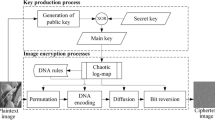Abstract
Steganography is a process that involves hiding a message in an appropriate carrier for example an image or an audio file. The carrier can then be sent to a receiver without anyone else knowing that it contains a hidden message. This is a process, which can be used for example by civil rights organisations in repressive states to communicate their message to the outside world without their own government being aware of it. Less virtuously it can be used by terrorists to communicate with one another without anyone else’s knowledge. In both cases the objective is not to make it difficult to read the message as cryptography does, it is to hide the existence of the message in the first place possibly to protect the courier. The initial aim of this study was to investigate steganography and how it is implemented. Based on this work a number of common methods of steganography could then be implemented and evaluated. The strengths and weaknesses of the chosen methods can then be analysed. To provide a common frame of reference all of the steganography methods implemented and analysed used GIF images. Seven steganography methods were implemented. The methods were chosen for their different strengths in terms of resistance to different types of steganalysis or their ability to maximise the size of the message they could store. All of the methods used were based on the manipulation of the least significant bits of pixel values or the rearrangement of colours to create least significant bit or parity patterns, which correspond to the message being hidden.




























Similar content being viewed by others
References
Brown A (1994) S-Tools for Windows, Shareware. ftp://idea.sec.dsi.unimi.it/pub/security/crypt/code/s-tools3.zip(version 3)
Fridrich Jiri (1999) A new steganographic method for palette-based images. Center for Intelligent Systems, SUNY Binghamton, Binghamton, New York. IS&T’s PICS Conference, pp 285–289
Fridrich Jiri, Rui Du (2000, September/October) Secure steganographic methods for palette images. Center for Intelligent Systems, Dept. of SS&IE, SUNY Binghamton, Binghamton, New York. Information Hiding, Proceedings of the Third International Workshop, IH’99 Dresden Germany, Computer Science 1768, pp 47–60
Hansmann F (1996) Steganos. Deus Ex Machina Communications. http://www.steganography.com
Johnson Neil F, Sushil Jajodia (1998, April) Steganalysis of images created using current steganography software, Centre for Secure Information Systems, George Mason University, Fairfax, Virginia, Information Hiding, Second International Workshop, IH’98 Portland, Oregon, pp 273–289
Johnson Neil F, Zoran Duric, Sushil Jajodia (2001) Information hiding, and watermarking—attacks & countermeasures. Kluwer
Nelson Mark (1989, October) LZW data compression, Dr Dobbs Journal
Pfitzmann Birgit (1996, May–June) Information hiding terminology. First International Workshop, Cambridge, UK, Proceedings, Computer Science 1174, pp 347–350
Wayner Peter (2002) Disappearing cryptography, information hiding: steganography and watermarking (2nd edition). Morgan Kaufmann
Westfield Andreas, Pfitzmann Andreas (1999 October ) Attacks on steganographic systems. Third International Workshop, IH’99 Dresden Germany, Proceedings, Computer Science 1768, pp 61–76
Zollner J, Federrath H, Klimant H, Pfitzmann A, Piotraschke R, Westfeld A, Wicke G, Wolf G (1998, April) Modelling the security of steganographic systems, Information Hiding, 2nd International Workshop, IH’98 Portland, Oregon, Computer Science 1525, pp 344–354
Author information
Authors and Affiliations
Corresponding author
Additional information
An erratum to this article can be found at http://dx.doi.org/10.1007/s11042-006-0047-x
Rights and permissions
About this article
Cite this article
Bailey, K., Curran, K. An evaluation of image based steganography methods. Multimed Tools Appl 30, 55–88 (2006). https://doi.org/10.1007/s11042-006-0008-4
Published:
Issue Date:
DOI: https://doi.org/10.1007/s11042-006-0008-4




